Biscoff Cheesecake
Biscoff lovers, don’t miss this vegan Biscoff Cheesecake recipe! With a buttery Biscoff crust, creamy Biscoff cheesecake filling, and Biscoff in the topping, it’s got triple the cookie butter goodness in every bite.
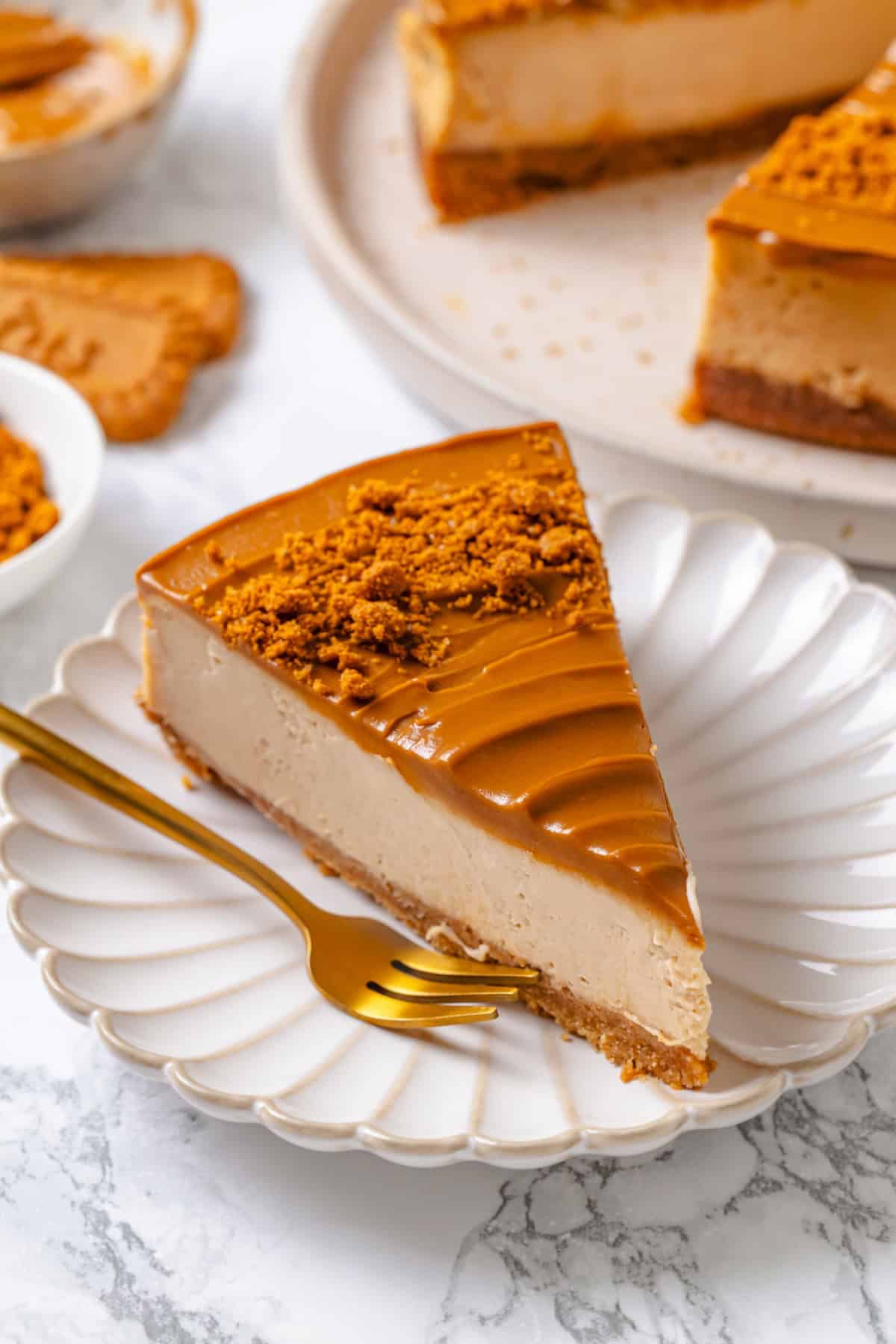
Whoever discovered that you could turn Biscoff cookies into a creamy cookie-flavoured spread deserves some kind of award. I could eat this stuff with a spoon, but I’ll try to resist—because I need to save some to make this Biscoff cheesecake recipe! Like my Chocolate Strawberry Cake, this is the kind of dessert that’s going to wow all of your guests, and you might just impress yourself too. It looks and tastes like it came from a professional bakery, but it’s easier to make than you think!
Why This Biscoff Cheesecake Is a Must-Make
You’re going flip for this cheesecake! Here’s what makes it so darn good.
- Triple the Biscoff. Biscoff cookies are used to make the crust and for the topping, and Biscoff spread is in the filling and melted over the top. Bliss!
- Simple vegan swaps. I do love a cashew cheesecake, but they can be tricky to get perfect. This vegan Biscoff cheesecake is made with plant-based cream cheese, so there’s no soaking and pureeing nuts.
- Easy to decorate. The topping is made by spreading melted Biscoff onto the cheesecake and then sprinkling crushed cookies on top of that. No frosting or piping needed for professional results!
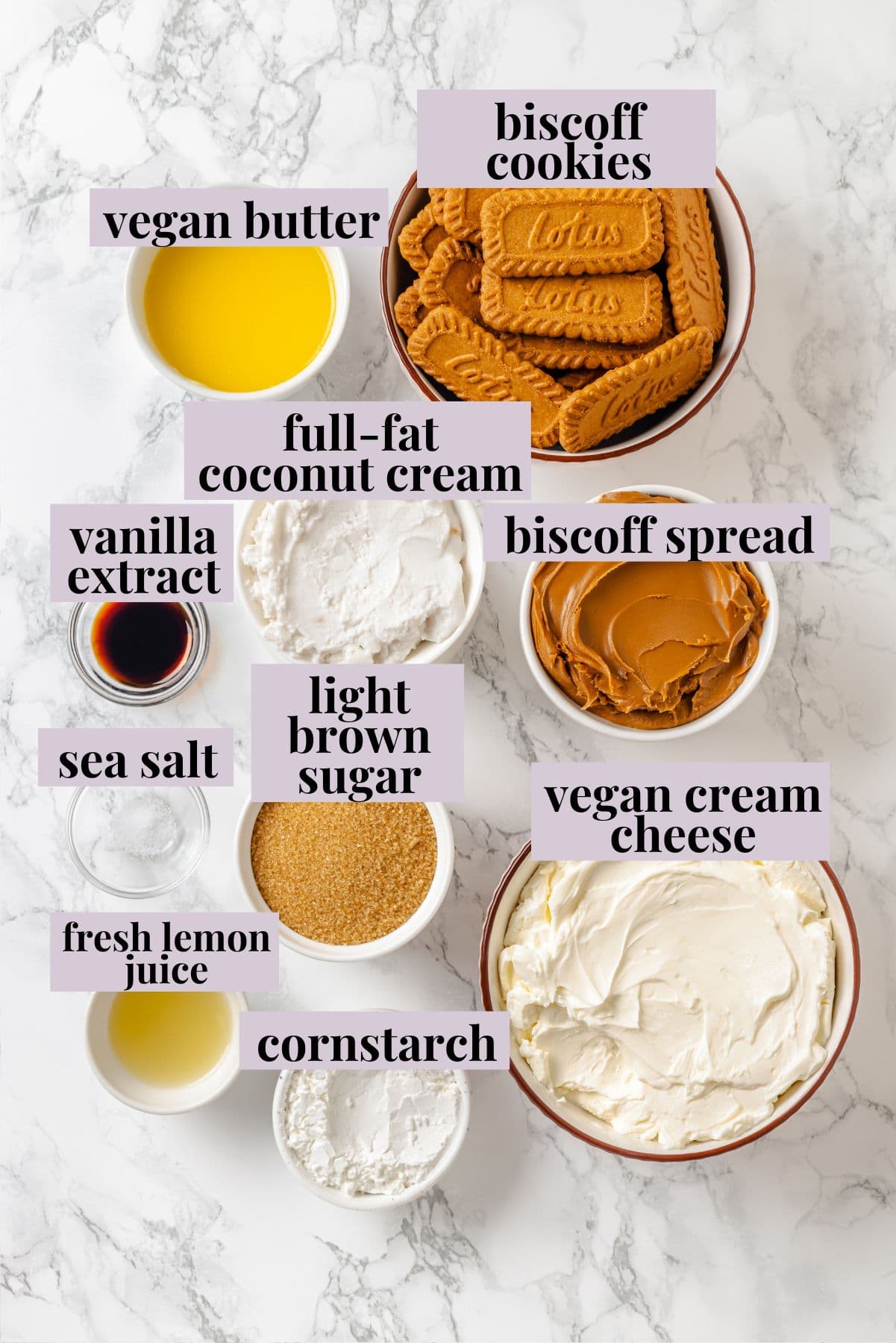
Notes on Ingredients
Here’s the list of ingredients you’ll need to make a vegan Biscoff cheesecake. Scroll down to the recipe card to find the ingredient quantities and recipe instructions.
Crust:
- Biscoff cookies – In case you’re wondering, yes, Biscoff cookies are naturally vegan!
- Vegan butter – I like to use my homemade Vegan Butter.
Cheesecake Filling:
- Vegan cream cheese – You can use store-bought or homemade Vegan Cream Cheese.
- Light brown sugar
- Cornstarch – This is necessary to thicken the filling.
- Full-fat coconut cream – You can scoop this from chilled canned coconut milk or buy a can of coconut cream.
- Biscoff spread
- Vanilla extract – Or vanilla bean paste.
- Fresh lemon juice – This adds tanginess to vegan cheesecake.
- Sea salt
Topping:
- Biscoff spread – You’ll melt this until it’s pourable and spreadable.
- Biscoff cookies – Crush these for sprinkling over the top.
How to Make Vegan Biscoff Cheesecake
Let’s get started! This step-by-step guide will show you the process.
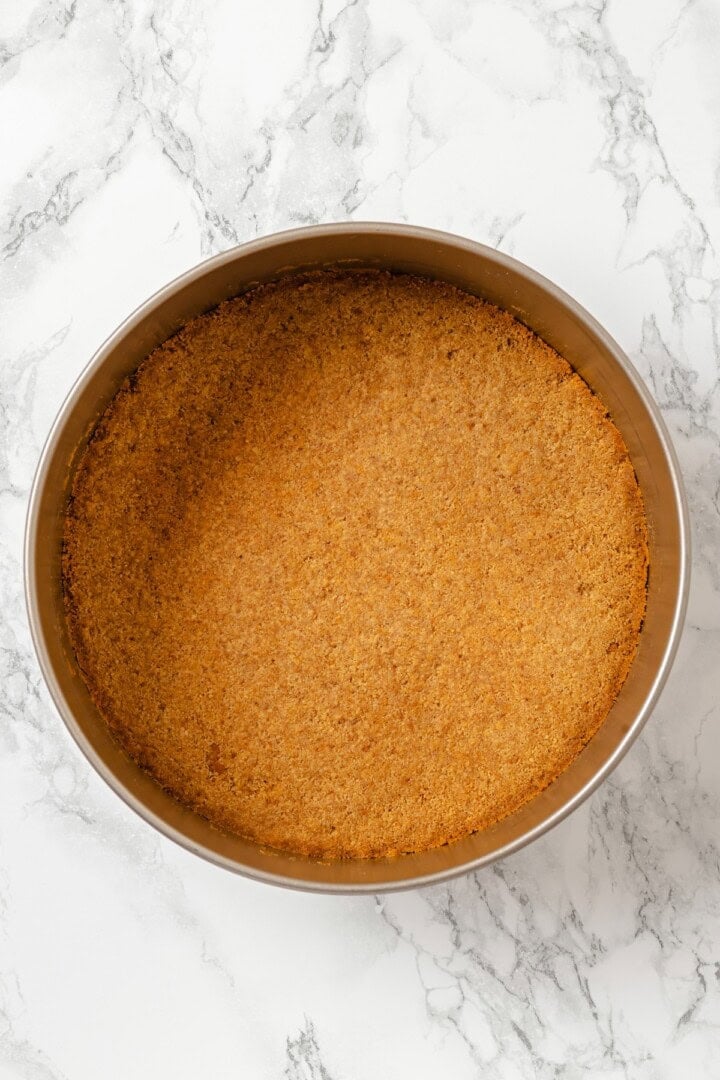
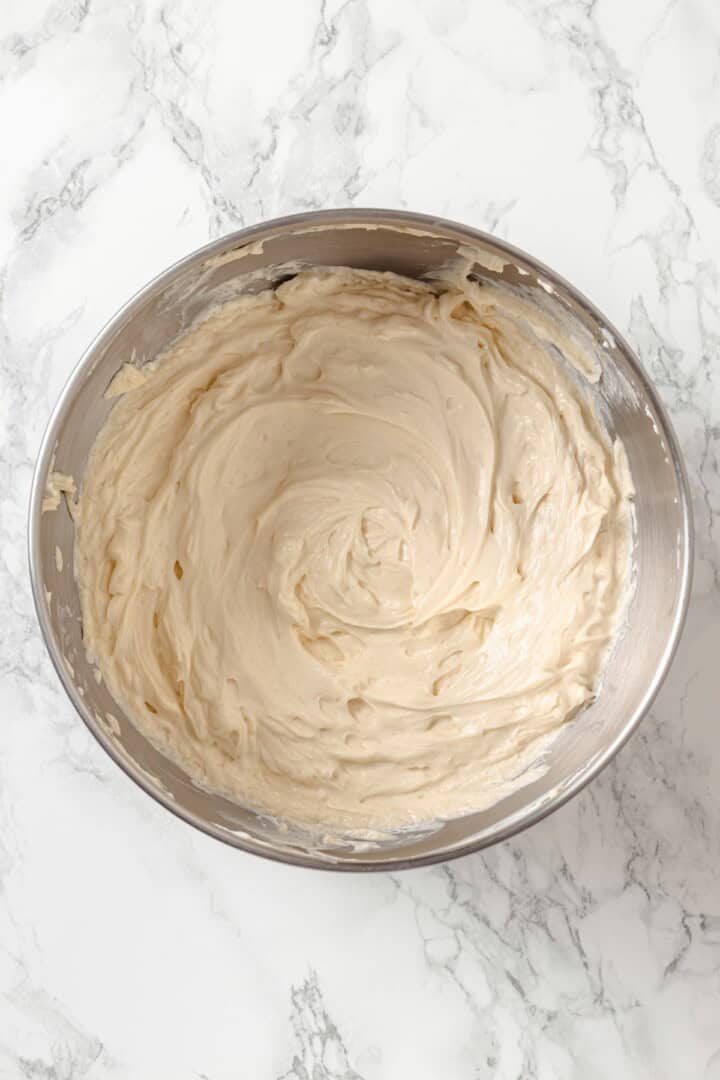
- Prepare the crust. Pulse the cookies to form crumbs, then pulse in the melted butter. Press this mixture into a springform pan and bake at 350ºF for 10 minutes.
- Start the filling. Beat the cream cheese until it’s softened and creamy, then beat in the brown sugar until the mixture is fluffy.
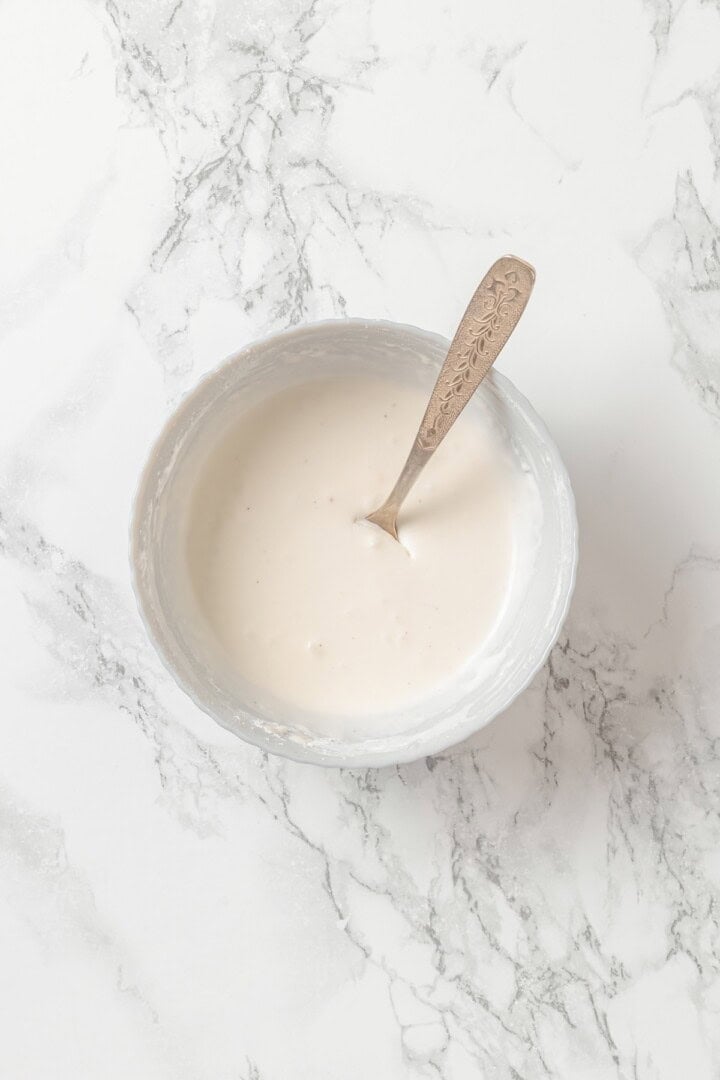
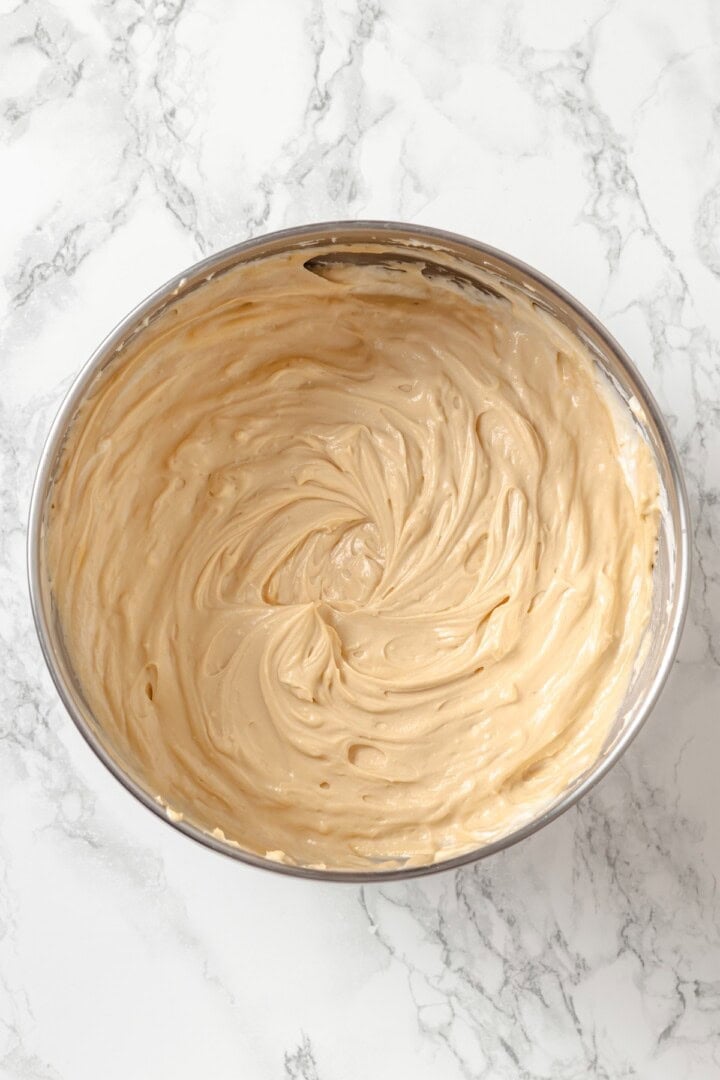
- Mix the cornstarch and coconut cream. Whisk 1/3 cup of coconut cream with cornstarch in a small bowl. Slowly mix this into the bowl with the cream cheese.
- Finish the filling. Beat in the remaining coconut cream in two additions, followed by the Biscoff spread, and then the vanilla, lemon juice, and salt.
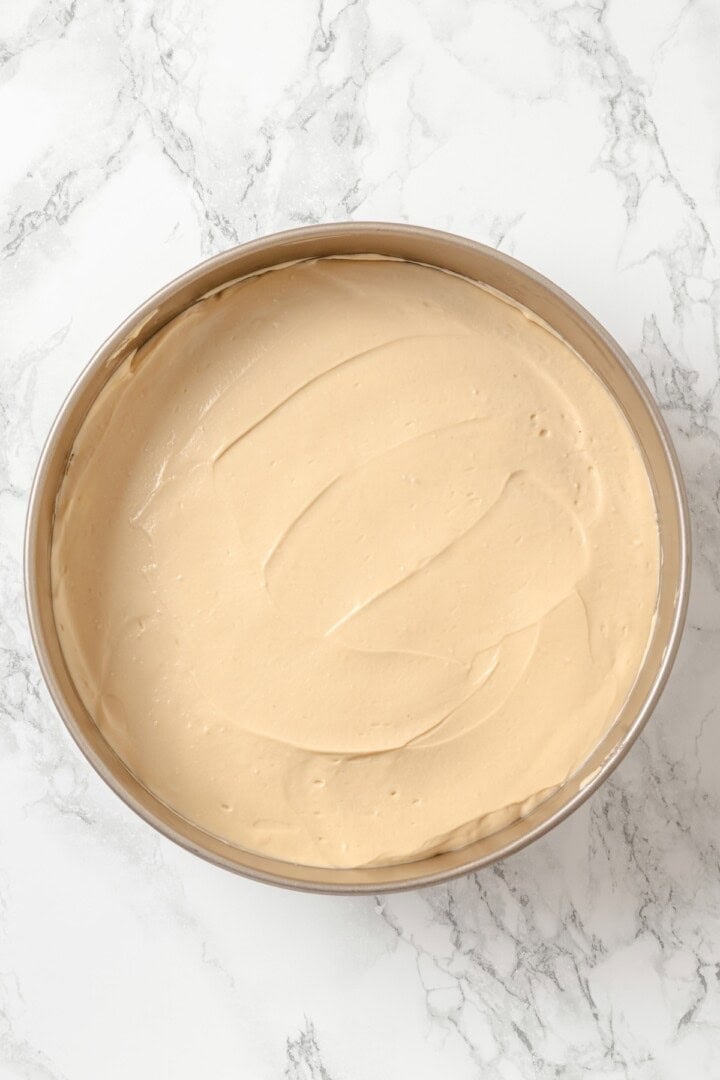
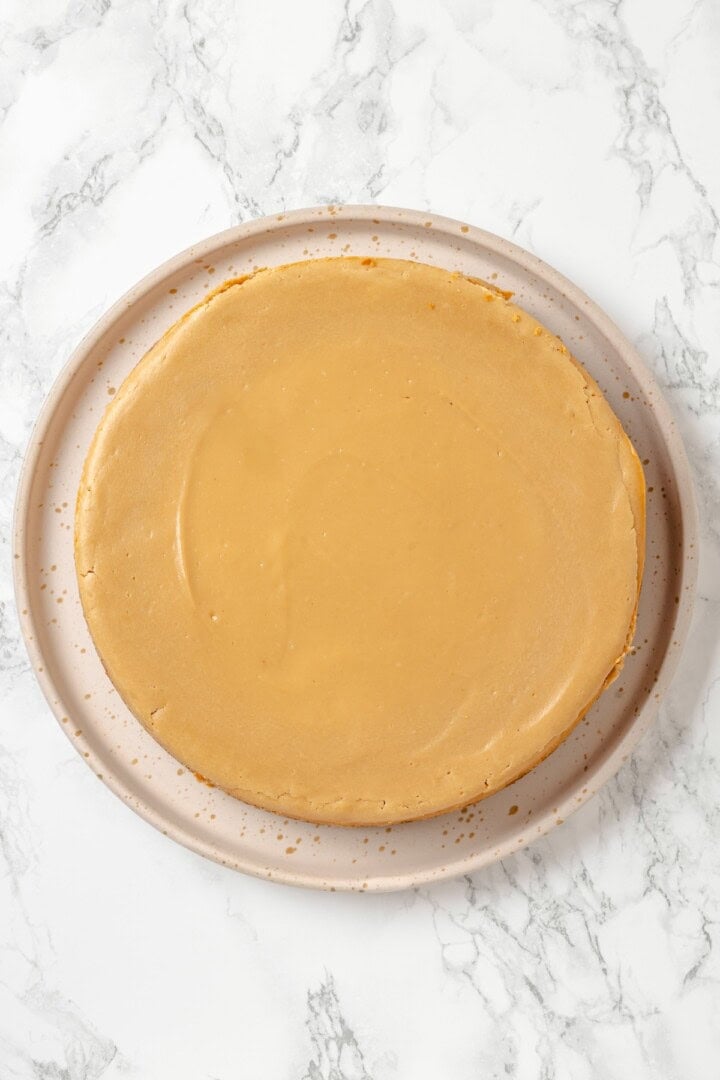
- Bake. Spread the filling over the crust and bake in a 325ºF oven for 70 to 75 minutes, or until the edges are puffy but the center still has a bit of jiggle.
- Cool and chill. Turn off the oven and open the door a crack. Let the cheesecake cool for an hour inside the oven, then transfer the pan to a wire rack. Run a knife along the edges to loosen the pan. Cool on the rack until the cheesecake reaches room temperature, then refrigerate for at least 6 hours to chill.
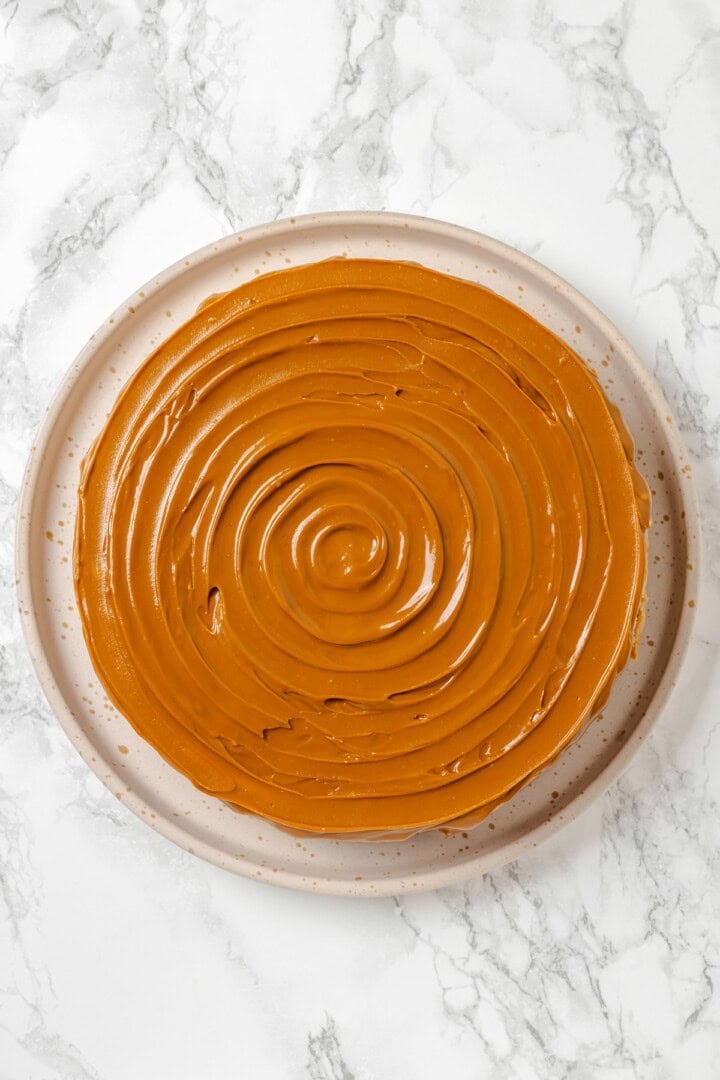
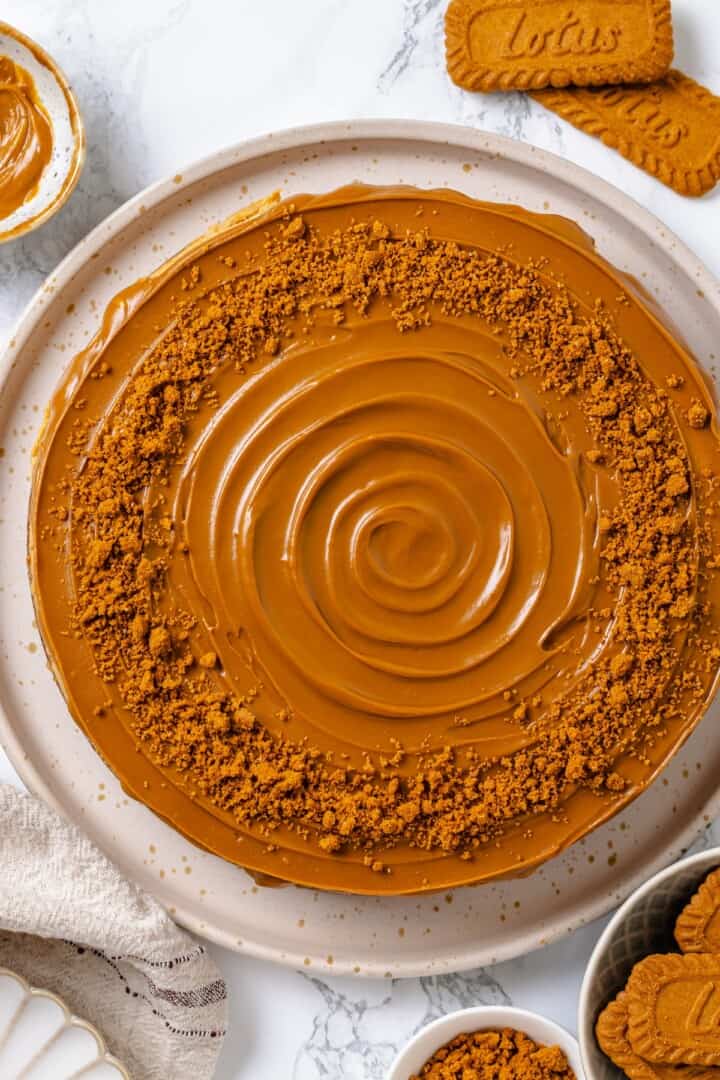
- Melt the Biscoff spread. You can melt it in the microwave or on the stovetop. You want it to be smooth and pourable.
- Top the cheesecake. Pour the melted Biscoff over the cheesecake and gently spread it into an even layer. Sprinkle the crushed cookies over the top, then refrigerate for 30 minutes before serving.
Tips for Success
Here are a few additional pointers for this Biscoff cheesecake recipe.
- Use firm pressure to press the crust into the pan. You’ll need to compact the crust, otherwise it will crumble. The bottom of a glass or measuring cup can help with this.
- Don’t overmix. Mixing too much introduces air into the batter, which can lead to the cheesecake cracking in the oven. (But if it does crack, it’s not the end of the world. You’ll be covering it with Biscoff spread anyway!)
- Wipe the knife between slices. As you’re slicing the cake, wipe the knife between each cut. This will give you nice clean slices.
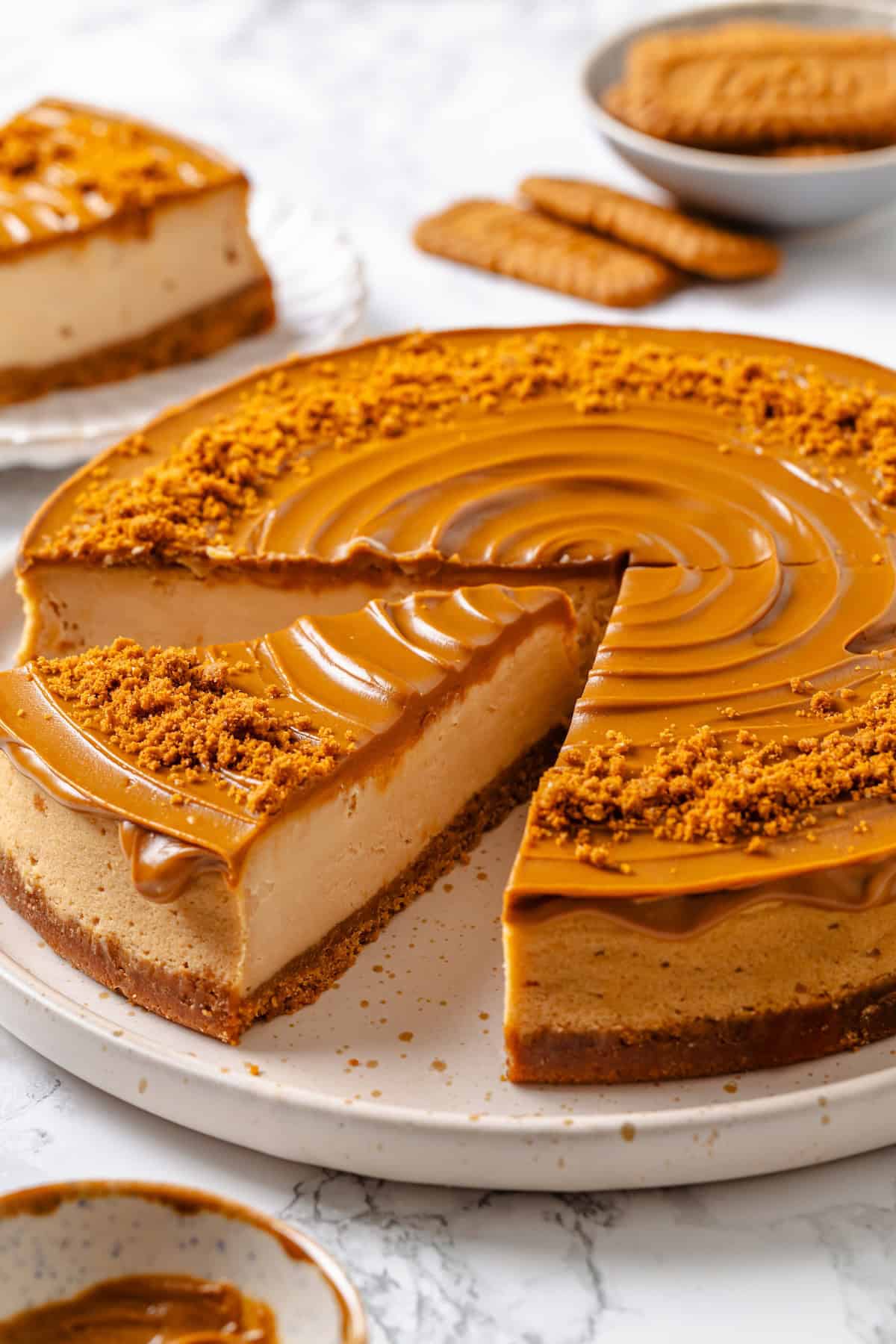
Serving Suggestions
If you’d like, you can pipe Cashew Whipped Cream or Coconut Whipped Cream onto each slice before serving like Cheesecake Factory does, or just add a dollop from a spoon to each slice. Of course, this Biscoff cheesecake is delicious without whipped cream too!
How to Store
- Refrigerator: Cover the Biscoff cheesecake in plastic wrap or transfer smaller portions of leftovers to an airtight container. Refrigerate for up to 4 days.
- Freezer: Freeze leftovers wrapped in plastic and then a layer of foil or, after wrapping the slices in plastic, set them in an airtight container or freezer bag. Freeze for up to 3 months. Thaw in the refrigerator before eating.
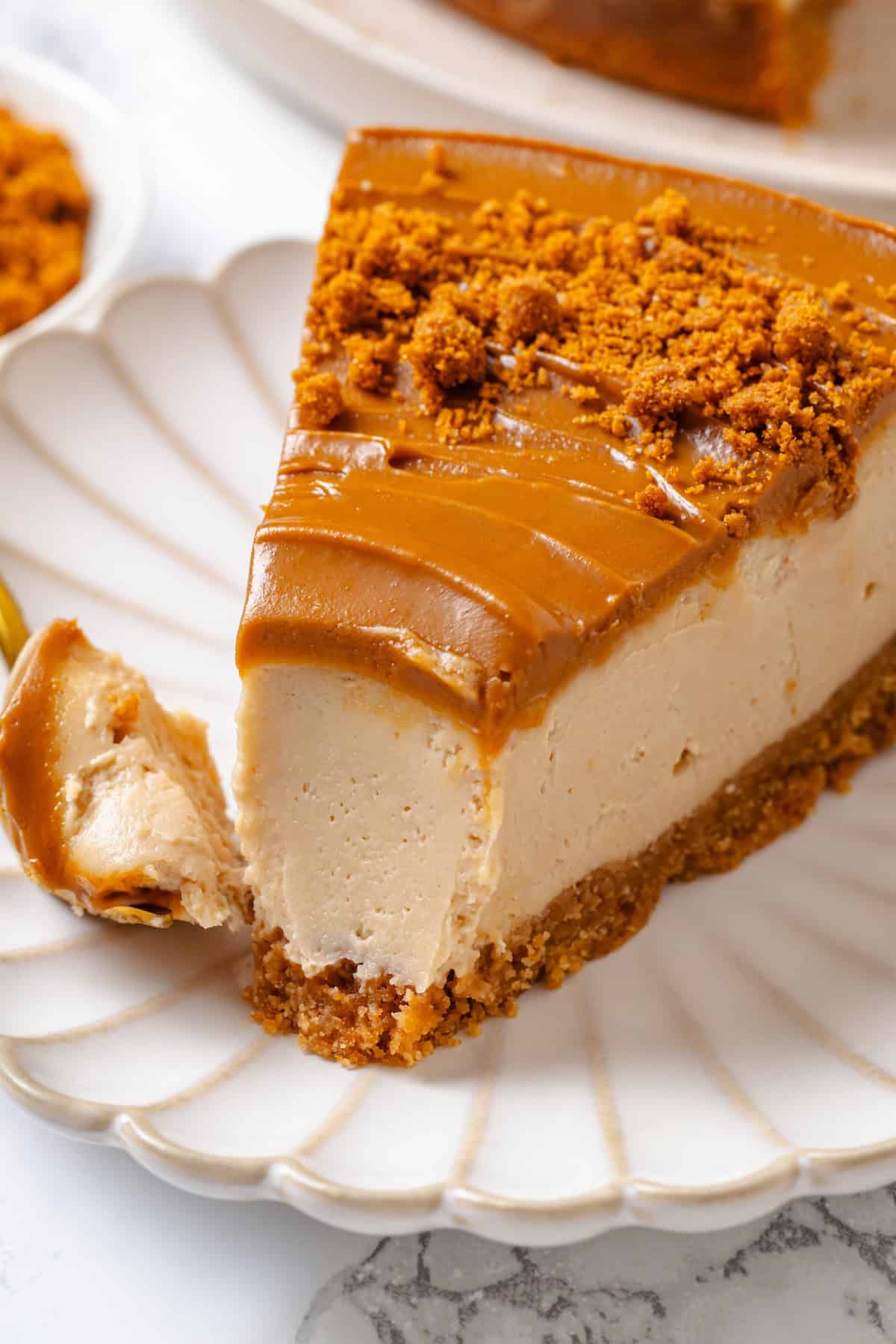
More Vegan Cheesecake Recipes
Enjoy friends! If you make this Biscoff cheesecake, please snap a photo and tag #jessicainthekitchen on Instagram! We’d also love it if you would leave a comment below, and give the recipe a rating! Thanks so much!
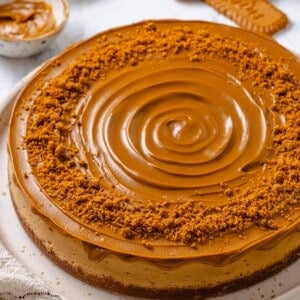
Biscoff Cheesecake
Ingredients
For the Crust:
- 1 package Biscoff cookies, 250g
- ⅓ cup vegan butter, melted – 75g
For the Cheesecake Filling:
- 32 ounces vegan cream cheese, 907g
- 1 cup light brown sugar, packed – 200g
- 5 tablespoons cornstarch, 50g
- 1⅓ cups full-fat coconut cream, 320mL
- ¾ cup Biscoff spread, 180g
- 2 teaspoons vanilla extract, 10mL
- 3 tablespoons fresh lemon juice, 45mL
- ¼ teaspoon sea salt, 1g
For the Topping:
- 5 ounces Biscoff spread, melted – 150g
- 2 ounces Biscoff cookies, crushed – 50g
Instructions
Prepare the Crust:
- Preheat your oven to 350°F (175°C).
- Place the entire package of Biscoff cookies into a food processor and blend into fine crumbs.
- Pour in the melted vegan butter and pulse until evenly combined.
- Press the mixture firmly into the bottom of a 9-inch (23 cm) springform pan to form an even crust.
- Bake for 10 minutes, then set aside to cool slightly.
- Reduce oven temperature to 325°F (165°C).
Make the Cheesecake Filling:
- In a large mixing bowl or stand mixer, briefly beat the vegan cream cheese to soften – about 10 seconds.
- With the mixer on low, gradually add the brown sugar. Increase speed to medium and beat until smooth and fluffy, about 3 minutes, scraping down the sides as needed.
- In a separate bowl, whisk ⅓ cup of the coconut cream with the cornstarch until completely smooth.
- Slowly add the cornstarch mixture into the cream cheese, mixing just until incorporated.
- Add the remaining coconut cream in two additions, mixing for about 15 seconds after each and scraping the bowl as needed.
- Add the Biscoff spread and mix until evenly combined.
- Finally, mix in the vanilla extract, lemon juice, and salt until just blended.
Bake the Cheesecake:
- Pour the filling over the baked crust and smooth the top with a spatula.
- Bake on the center rack for 70 to 75 minutes, until the edges are slightly puffed, the top appears matte, and the center has a gentle wobble.
- Turn the oven off and crack the door open with a wooden spoon or folded towel. Let the cheesecake cool in the oven for 1 hour.
- Transfer the pan to a wire rack. Run a thin knife around the edges to loosen the cake, then let it cool completely at room temperature for 1 to 3 hours.
- Refrigerate the cheesecake for at least 6 hours, preferably overnight.
Add the Topping:
- To melt Biscoff spread, transfer it to a microwave-safe bowl and heat in short bursts of 10 to 30 seconds, stirring well between each interval until smooth and pourable. Alternatively, you can melt it gently on the stovetop over low heat in a small saucepan, stirring constantly to avoid burning.
- Once the cheesecake is fully chilled and set, pour the melted (slightly cooled) Biscoff spread over the top of the cheesecake. Gently spread it into an even layer and make a pattern with a spoon.
- Sprinkle the crushed Biscoff cookies over the top.
- Refrigerate for another 30 minutes to set the topping before slicing and serving.
Notes
- Refrigerator: Cover the Biscoff cheesecake in plastic wrap or transfer smaller portions of leftovers to an airtight container. Refrigerate for up to 4 days.
- Freezer: Freeze leftovers wrapped in plastic and then a layer of foil or, after wrapping the slices in plastic, set them in an airtight container or freezer bag. Freeze for up to 3 months. Thaw in the refrigerator before eating.
Disclaimer: Although jessicainthekitchen.com attempts to provide accurate nutritional information, kindly note that these are only estimates. Nutritional information may be affected based on the product type, the brand that was purchased, and in other unforeseeable ways. Jessicainthekitchen.com will not be held liable for any loss or damage resulting for your reliance on nutritional information. If you need to follow a specific caloric regimen, please consult your doctor first.




I’m allergic to wheat, so will only be trying the base of this recipe and using some sort of gluten free crust and topping, but I am so glad to see the recipe, cause it looks not only good, but simple. I like my cheesecake plain, so am always looking for something to try that resembles the perfect ones I used to make back when I could eat dairy! I’ll let you know! Glad that it can freeze. Thanks for your post with all the links to cream cheese and yogurt! I’m trying them all.
Hi again Randy! Really excited for you to try it all! Please don’t hesitate to reach out if you have any questions along the way, and do share how everything went!